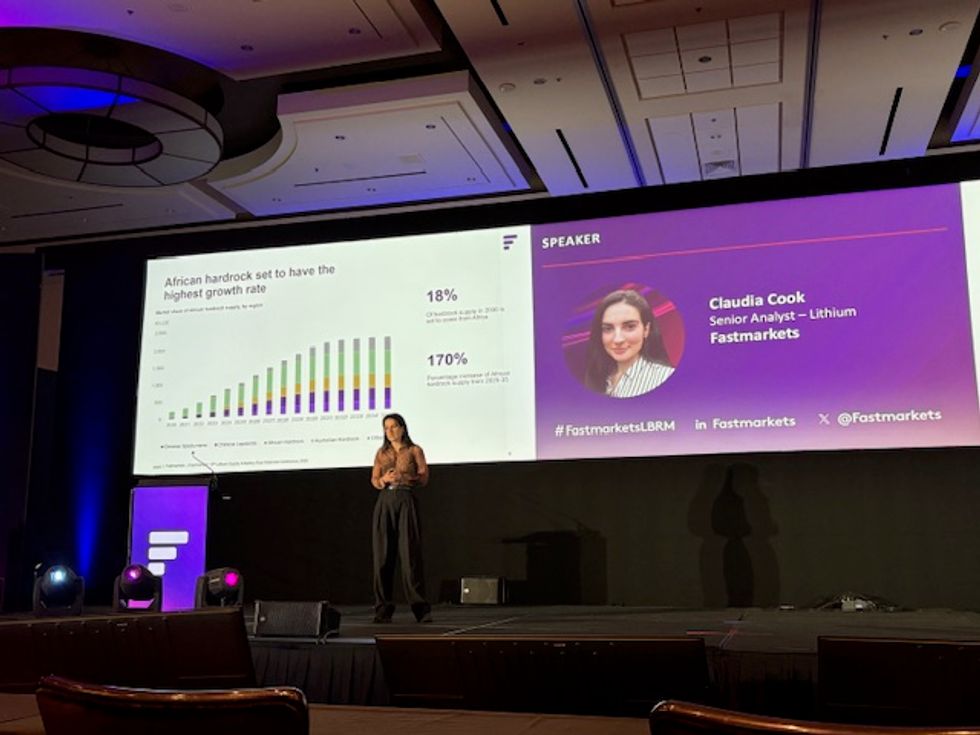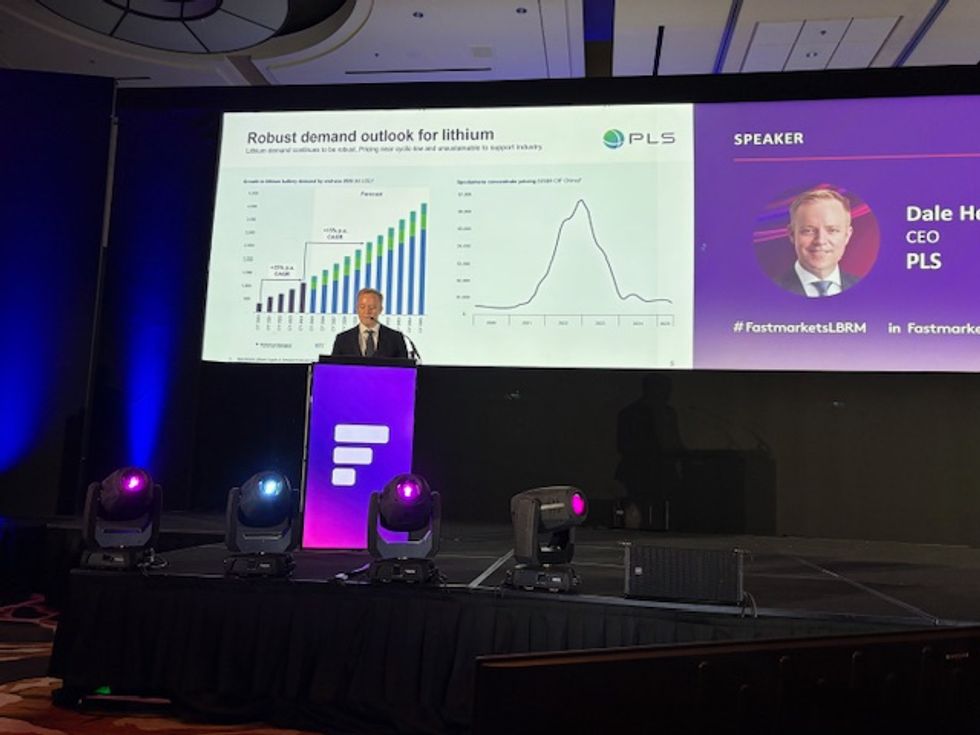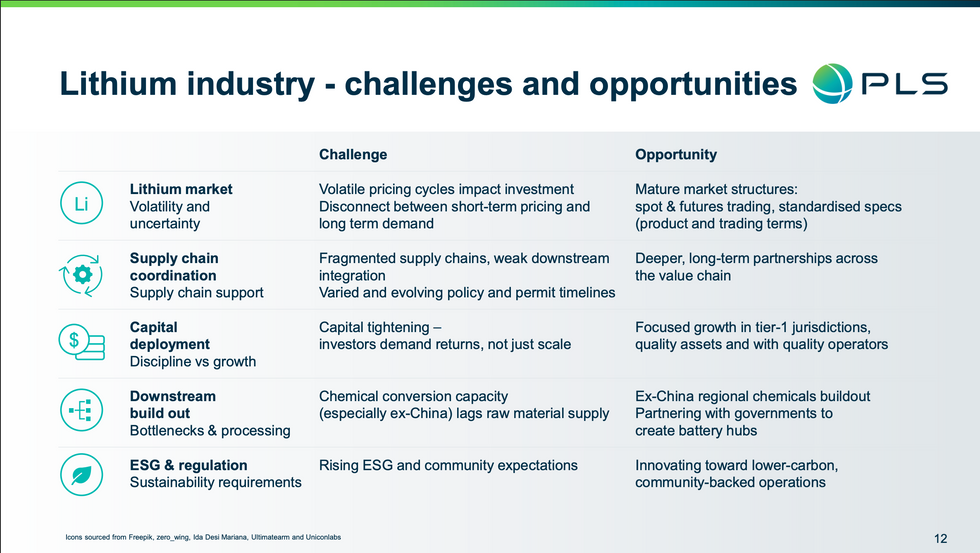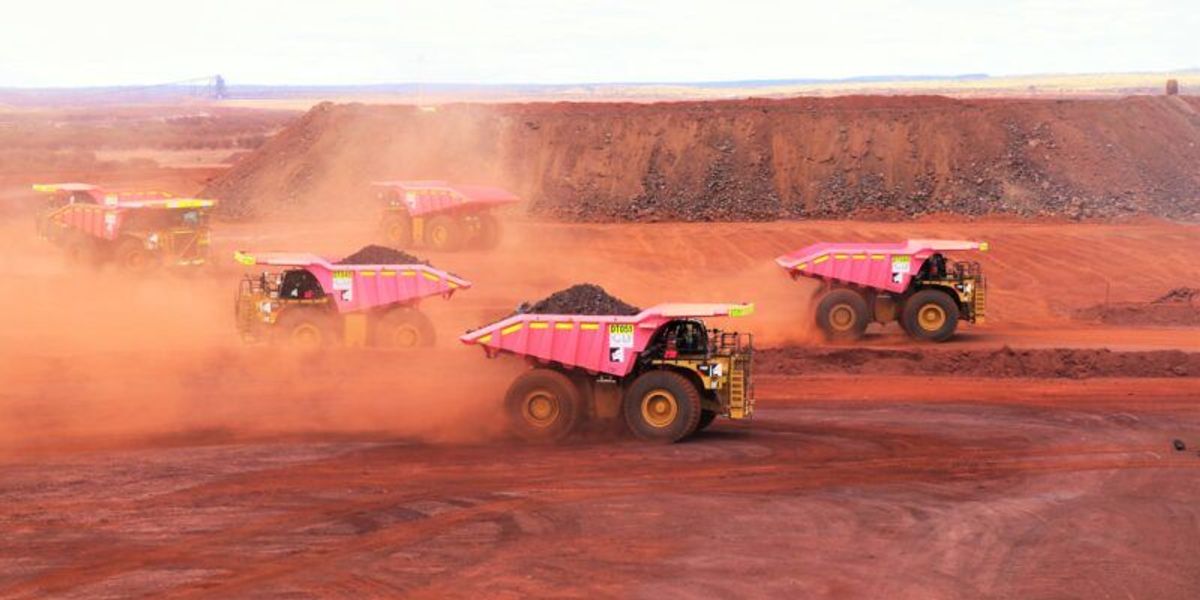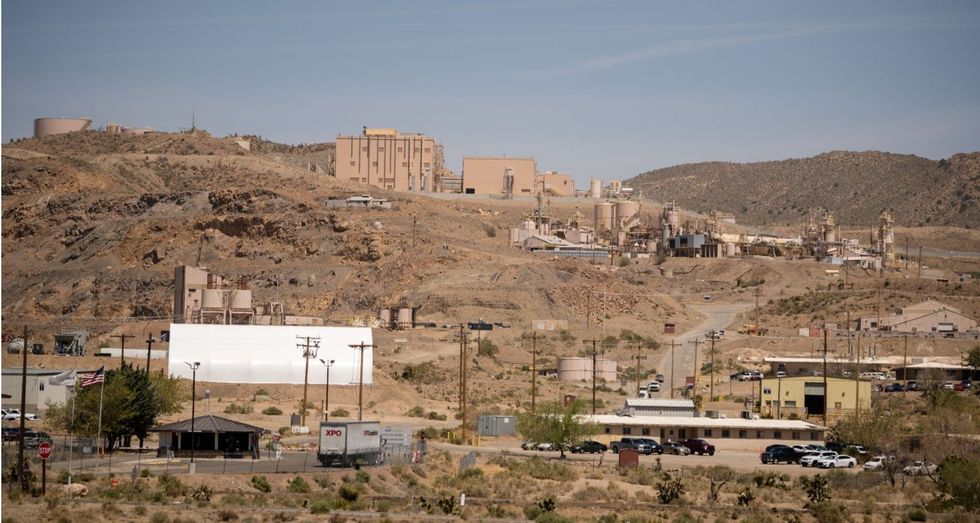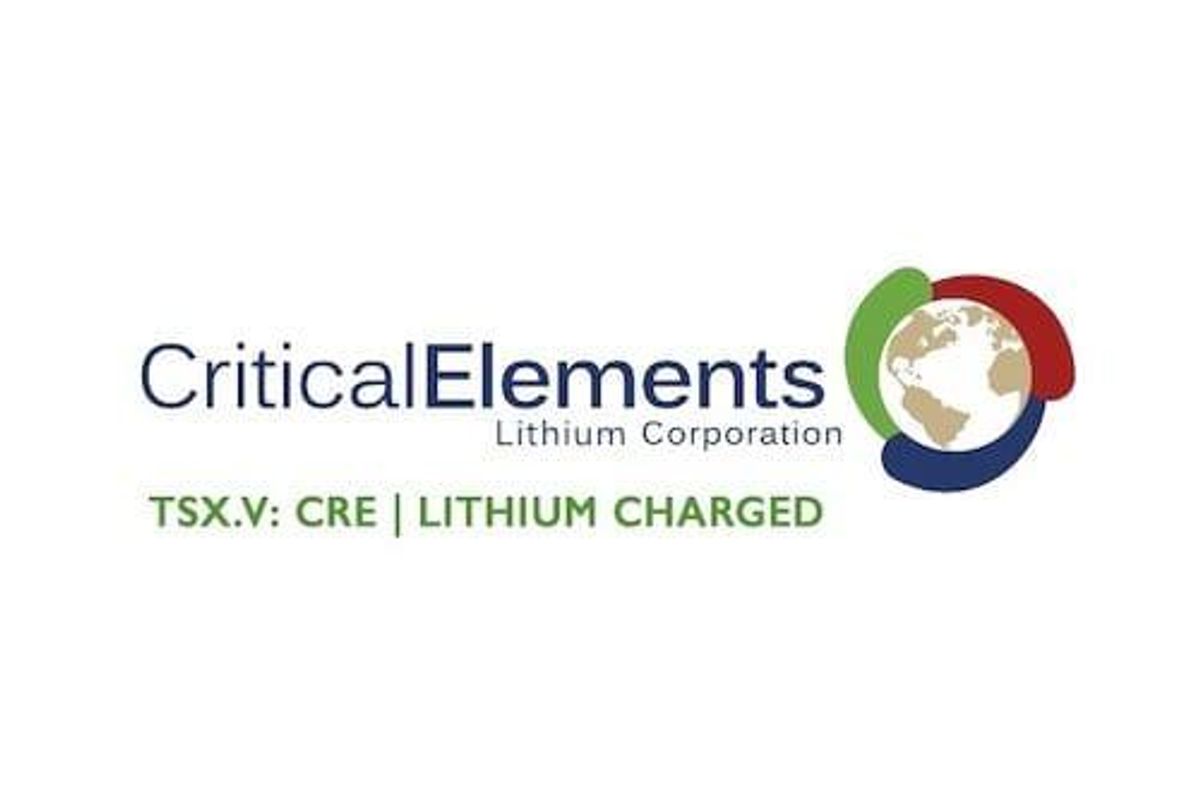
Critical Elements Lithium Corporation (the "Corporation" or "Critical Elements") (TSX.V:CRE) (US OTCQX:CRECF) (FSE:F12) wishes to provide a corporate update and project update on the Rose Lithium-Tantalum Project ("Rose" or the "Project
Highlights
- Leading equity research firm "calls the bottom" on lithium pricing
- Lithium hydroxide demand is expected to outpace lithium carbonate demand past 2022, exceeding 200,000 Mt LCE according to Canaccord Genuity Research
- A sulphate-free lithium extraction process, similar to that recently announced by Tesla, was successfully tested by Critical Elements in 2017 and 2018 with a recovery rate of 93% from concentrate
- The European Commission's raw material strategy and recent U.S. Executive Order urgently require critical raw materials supply from countries like Canada
- Critical Elements provided requested information to Provincial regulatory authorities as part of the environmental impact assessment process for Rose
- Quebec's strong electric aspirations
Corporate & Project Update
Critical Elements' vision is to be a global leading, responsible supplier of lithium hydroxide to the emerging electric vehicle and energy storage industries. The Corporation is well-positioned to play a significant role in the lithium market with one of the highest purity spodumene deposits in the world and over 530 km2 of prospective lands in the tier one mining jurisdiction of Québec. Critical Elements is focused on achieving this vision with minimal environmental impact by leveraging low carbon electricity available through Québec's established power grid and cooperating with the Cree Nation of Eastmain and other local Cree Nations communities, with whom relationships have been publicly formalized.
Critical Elements wishes to comment on the share price appreciation experienced by the Corporation along with many other lithium exploration and development companies over recent trading sessions. Critical Elements is of the view that much of the recent share price movements can be attributed to a series of exogenous events that contribute toward a more positive long-term lithium supply and demand outlook.
Over the last few months, Critical Elements has been in steady communication with provincial and federal regulatory authorities concerning the permitting of Rose. Critical Elements recently provided Québec's Ministère de l'Environnement et de la Lutte contre les changements climatiques with requested information and expects to receive feedback within the next few weeks. Critical Elements also expects to provide the Canadian Environmental Assessment Agency with requested information within the next few weeks.
Dr. Steffen Haber, President of Critical Elements, is the former CEO of Rockwood Lithium, sold to Albemarle for US$6.2 billion in January 2015. He commented that, "We are confident that our responsibly sourced, high purity spodumene concentrate and battery quality lithium hydroxide will be highly marketable in the North American and European markets over the decade or more before recycling becomes a significant presence in the battery materials landscape."
European Critical Minerals Strategy
The European Commission ("EC") published its security and sustainability strategy for critical raw materials in September 2020 as part of the Green Deal which seeks to achieve climate neutrality by 2050. The EC believes the COVID-19 crisis has revealed the fragility of global supply chains emphasizing the need to increase supply chain resilience and European autonomy. The European Union's ("EU") list of "critical materials" has been expanded to include 30 materials in 2020, compared to 27 in 2017, and now includes lithium. According to the EC, to achieve its goals for electric vehicle batteries and energy storage, the EU would need up to 18 times more lithium supply by 2030 and up to 60 times more by 2050, relative to the current EU supply.
The EC report highlights the fact that countries such as China, the United States and Japan have already begun to secure future supplies of raw materials, diversify sources of supply through strategic partnerships with resource-rich countries and develop resilient internal raw material-based value chains. Due to geological limitations, the EU recognizes that its regional supply chain will largely rely on imports in the medium to long term. In this competitive market, the EU action plan includes diversifying supply with sustainable and responsible sourcing from third countries, specifically mentioning highly developed mining countries such as Canada. The European Investment Bank has also adopted a new energy lending policy, which will support projects in the EU and third countries relating to the supply of critical raw materials needed for low carbon technologies in the EU.
Leading Equity Research Firm "Calls the Bottom" on Lithium Pricing
Canaccord Genuity Corp. ("CG") is one of the leading brokerage firms covering the lithium sector. In a report published in September 2020, CG analysts stated lithium prices are bottoming, a view supported by production cuts, capacity constraints and China chemical pricing falling below the global LCE cost curve. Although prices for battery quality lithium carbonate and lithium hydroxide sold to tier one battery manufacturers have held up well, CG considers the current broader pricing environment unsustainable.
Key report highlights:
- Strong 2020 YTD European EV sales volumes offsetting weaker Chinese sales, with growth expected to accelerate with the introduction of tighter EU fleet CO2 emissions standards and new government subsidies
- CG is forecasting a 22% CAGR for lithium demand out to 2030
- CG estimates that a total of ~440,000 t/a lithium carbonate equivalent ("LCE") in existing or planned capacity has been shut, cancelled or deferred in the last twelve months in response to the lithium pricing pullback
- Higher pricing will be required to incentivize a return to prior rates of supply growth and investment in new capacity
- It is expected that supply surpluses will mostly reverse by 2023, twelve months ahead of the previous forecast
- Lithium hydroxide demand is expected to catch up to lithium carbonate demand in 2022, two years ahead of the previous forecast, as EV sales accelerate in Europe (typically characterized by larger vehicles utilizing higher content nickel battery formulations requiring lithium hydroxide)
- This has significant growth implications for hard rock spodumene sources of supply as compared to brine sources, especially for high purity spodumene deposits like Rose
- Delays in lithium hydroxide conversion capacity expansion support the CG thesis that large market deficits are expected to emerge beginning in 2025
Tesla's Battery Day
On its highly anticipated annual Battery Day in September 2020, Tesla, Inc. ("Tesla") underscored its technological lead in electric vehicle technology and process engineering. Management outlined its own goals and set the pace for its competitors. Tesla intends to achieve a complete global transition to sustainable energy requiring the delivery of affordable electric vehicles and energy storage. This requires terawatt-scale battery production and more affordable cells. Tesla is targeting 3 TWh/a battery manufacturing capacity by 2030 from 100 MWh/a today. Concurrently, Tesla intends to increase range by 54%, reduce capital investment ($/GWh) by 69% and reduce production cost by 56%. Tesla has re-envisaged the entire process from cell design to cell processing/factory design, anode materials, cathode materials and cell vehicle integration.
On the raw materials side for cathode production, Tesla is focused on reducing the distance travelled for each kilogram of material, targeting an 80% reduction from current levels. This reduction implies a powerful shift toward regional supply chains around Tesla battery manufacturing hubs located in Shanghai, Berlin and Texas. Tesla appears to have embarked on a two-pronged approach, sourcing spodumene concentrate regionally for conversion to lithium hydroxide and sourcing lithium from its operation in Nevada.
Tesla intends to build a conversion facility adjoining its cathode and cell manufacturing facility in Texas, which will be initially fed by spodumene concentrate sourced from North Carolina and, based on the map in its event presentation, Québec and Ontario. The conversion facility will incorporate "a new hydrometallurgical sulphate-free process [Tesla] will pioneer."
In October 2018, Critical Elements announced the successful conversion of spodumene concentrate from Rose into battery-grade lithium hydroxide in a pilot plant program completed by Metso Outotec, a frontrunner in sustainable minerals processing technologies. The sulphate-free Metso Outotec hydrometallurgical process generated strong results with lithium extraction rates of 93%, versus the market benchmark of 70-75%.
Tesla appears confident that it can advance through technical studies and the permitting process for mining and water use to mine sediment (clay) hosted lithium ore from its new +10,000-acre project in Nevada, while also pioneering a suitable process to extract lithium from the ore using water and table salt. Critical Elements is confident that its responsibly sourced, high purity spodumene concentrate amenable to producing battery-grade lithium hydroxide will be highly marketable in the North American and European markets going forward.
Québec's Electric Aspirations
In an interview with Québec's Minister of the Economy, Pierre Fitzgibbon by Le Journal (September 23, 2020), the Minister outlined the Province's aspiration to build an electrification industry focused on the lithium-ion battery. Québec has the natural resources, inexpensive and low-carbon electricity and intellectual capital to transform raw materials into cathodes, anodes and electrolytes, to be assembled into lithium-ion batteries. The Minister sees potential cumulative investment of up to $7.0 billion within 10 years and, to facilitate this, Québec is ready to contribute up to $1.4 billion. The Province's vision of a battery hub based in Québec and supplying the North American and European automotive industries is both realistic and well-aligned with Critical Elements' vision.
U.S. Presidential Executive Order
In September 2020, the United States President, Donald J. Trump, signed Executive Order 13817 determining that there is an "undue reliance on critical minerals, in processed or unprocessed form, from foreign adversaries" and that this "constitutes an unusual and extraordinary threat… to the national security, foreign policy, and economy of the United States". President Trump consequently declared a national emergency to deal with this threat. According to the Executive Order, the list of 35 critical minerals includes lithium. In addition to "expanding and strengthening domestic mining and processing capacity", the order seeks to "reduce the vulnerability of the United States to the disruption of critical mineral supply chains through cooperation and coordination with partners and allies".
In addition to further investigation and formalized reporting, further executive action may include the imposition of tariffs or quotas, funding opportunities including grants, loan guarantees and other incentive awards and loans, and "use all available authorities to accelerate the issue of permits and the completion of projects in connection with expanding and protecting the domestic supply chain for minerals." The importance of a responsible North American-centric supply chain for critical minerals is clear.
Strategic Partner & Project Financing Discussions
The Corporation continues to work closely with its financial advisor, Canaccord Genuity Corp., to evaluate ongoing interest from potential capital providers and global strategic partners that seek to accelerate development of the Rose project.
As part of the process, Critical Elements and their advisor have been in contact with a number of logical potential strategic parties, including OEMs, cathode manufacturers and battery cell manufacturers.
Concurrently, the Corporation continues to work with various financial institutions and lenders to explore project debt financing opportunities for the construction of Rose.
Critical Elements' CEO, Jean-Sébastien Lavallée, notes, "We own 100% of the Nisk-1 Ni-Cu-PGE deposit. Given recent high interest for sulfide nickel projects, we have started a review of different options to recognize the project's value on behalf of shareholders."
Nisk-1 Ni-Cu-PGE Deposit
Critical Elements is assessing various alternatives for its 100%-owned Nisk property ("Nisk"). Nisk is composed of one block totaling 100 claims covering an area of 51 km2 and a length of over 20 km. The Route du Nord from Chibougamau runs inside the south border of the property. Nisk is also traversed in a NE direction by a Hydro-Québec power line and a road that heads north to the Eastmain River and beyond to the La Grande River area.
Nisk is currently known for its magmatic nickel-copper sulphide deposits associated with ultramafic intrusion potential. It notably hosts the Nisk-1 Ni-Cu-PGE deposit ("Nisk-1").
Nisk-1 is hosted in an elongated body of serpentinized ultramafic rocks that intrude the Lac des Montagnes paragneiss and amphibolite sequence. The ultramafic rock intrusion is a sill bordered by paragneisses and amphibolites. Quite similar on either side of the ultramafic sill, they still can be subdivided into a lower paragneiss sequence to the NW of the sill (stratigraphically older) and an upper paragneiss sequence to the SE of the sill (stratigraphically younger).
The ultramafic sill is not a single intrusion. At least two distinct lithological units can be identified. The first, a grey serpentinized peridotite with magnetite veinlets, does not contain any sulphide minerals. The second is a black serpentinized peridotite with chrysotile veinlets. The Ni-Cu-Co-Fe sulphide mineralization is invariably associated with this black serpentinite.
Nisk-1 is the only mineralized zone with estimated resources on the property. An NI 43-101 resource estimate was delivered in 2009 (Resource Estimate for the NISK-1 Deposit, Lac Levac Property, Nemiscau, Quebec, NI 43-101 Technical Report prepared by Pierre Trudel Ph.D., P.Eng. Geological Engineer):
- Measured resource: 1,255,000 tonnes at 1.09% Ni; 0.56% Cu; 0.07% Co; 1.11 g/t Pd and 0.20 g/t Pt
- Indicated resource: 783,000 tonnes at 1.00% Ni; 0.53% Cu; 0.06% Co; 0.91 g/t Pd and 0.29 g/t Pt
- Inferred resource: 1,053,000 tonnes at 0.81% Ni; 0.32% Cu; 0.06% Co; 1.06 g/t Pd and 0.50 g/t Pt
Due to increasing interest in nickel sulphide projects, the Corporation has commenced a systematic process to explore, review and evaluate potential options to monetize Nisk-1.
Qualified persons
Paul Bonneville, Mining Eng., Project Manager of the Corporation, is the qualified person that has reviewed and approved the technical contents of this news release on behalf of the Corporation.
About Critical Elements Lithium Corporation
Primero Group recently completed the first phase of its Early Contractor Involvement agreement with the Corporation and provided a Guaranteed Maximum Price for the engineering, procurement and construction of the wholly-owned Rose Lithium-Tantalum project on a lump sum turnkey basis that is in line with the Project's feasibility study published November 29, 2017. The project feasibility study is based on price forecasts of US $750/tonne for chemical-grade lithium concentrate (5% Li2O), US $1,500/tonne for technical-grade lithium concentrate (6% Li2O) and US $130/kg for Ta2O5 in tantalite concentrate, and an exchange rate of US $0.75/CA $. The internal rate of return ("IRR") for the Rose Lithium-Tantalum project is estimated at 34.9% after tax, and net present value ("NPV") is estimated at CA $726 million at an 8% discount rate. The estimated payback period is 2.8 years. The pre-tax IRR for the Rose Lithium-Tantalum Project is estimated at 48.2% and the pre-tax NPV at CA $1,257 million at an 8% discount rate (see press release dated September 6, 2017). The financial analysis is based on the Indicated mineral resource. An Indicated mineral resource is that part of a mineral resource for which quantity, grade or quality, densities, shape and physical characteristics can be estimated with a level of confidence sufficient to allow the appropriate application of technical and economic parameters, to support mine planning and evaluation of the economic viability of the deposit. The life-of-mine (LOM) plan provides for the extraction of 26.8 million tonnes of ore, 182.4 million tonnes of waste, and 11.0 million tonnes of overburden for a total of 220.2 million tonnes of material. The average stripping ratio is 7.2 tonnes per tonne of ore. The nominal production rate is estimated at 4,600 tonnes per day, with 350 operating days per year. The open pit mining schedule allows for a 17-year mine life. The mine will produce a total of 26.8 million tonnes of ore grading an average of 0.85% Li2O and 133 ppm Ta2O5, including dilution. The mill will process 1.61 million tonnes of ore per year to produce an annual average of 236,532 tonnes of technical and chemical grade spodumene concentrate and 429 tonnes of tantalite concentrate.
FOR MORE INFORMATION:
Jean-Sébastien Lavallée, P. Géo.
Chief Executive Officer
819-354-5146
jslavallee@cecorp.ca
www.cecorp.ca
Neither the TSX Venture Exchange nor its Regulation Services Provider (as that term is defined in the policies of the TSX Venture Exchange) accepts responsibility for the adequacy or accuracy of this release.
SOURCE:Critical Elements Lithium Corporation
View source version on accesswire.com:
https://www.accesswire.com/609728/Critical-Elements-Lithium-Corporations-Rose-Lithium-Tantalum-Project-Corporate-Update


